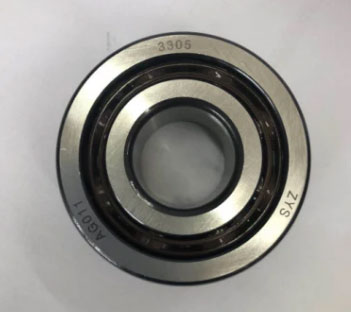Home / News / Spindle Bearing Noise: Causes, Diagnosis, and Remediation
Spindle Bearing Noise: Causes, Diagnosis, and Remediation
Introduction
Spindle bearing noise is a common issue that can significantly impact the performance, accuracy, and service life of various types of machinery, such as CNC machines, milling machines, and lathes. Excessive noise not only disrupts the work environment but also serves as an indicator of potential bearing problems. This article will discuss the primary causes of spindle bearing noise, methods for diagnosing the issue, and remedial actions to address the problem and improve overall machinery performance.

Causes of Spindle Bearing Noise
Improper Lubrication
Inadequate lubrication can lead to increased friction between the bearing's rolling elements and raceways, causing noise and potential damage. Over-lubrication can also result in excessive heat generation and churning, which may contribute to noise.
Contamination
Dust, debris, or other contaminants entering the bearing can disrupt the smooth contact between the rolling elements and raceways, causing noise and premature wear.
Misalignment
Misalignment of the bearing components, such as the inner and outer raceways or the spindle shaft, can lead to uneven contact and increased noise during operation.
Excessive Preload
Applying too much preload to the spindle bearings can cause excessive contact pressure, leading to increased friction, heat generation, and noise.
Bearing Wear and Damage
Worn or damaged bearings can generate noise due to irregular contact between the rolling elements and raceways or the presence of damaged components within the bearing assembly.
Diagnosing Spindle Bearing Noise
Visual Inspection
Perform a visual inspection of the spindle assembly and the surrounding components for signs of wear, contamination, or damage that may contribute to noise.
Auditory Assessment
Listen to the noise during operation and try to identify any patterns or changes in noise levels that may indicate specific issues, such as misalignment or insufficient lubrication.
Vibration Analysis
Utilize vibration analysis tools to measure and analyze the vibrations generated by the spindle bearings. Unusual vibration patterns or elevated vibration levels can indicate bearing problems.
Temperature Monitoring
Monitor the temperature of the spindle bearings during operation. Excessive heat generation can be a sign of improper lubrication, excessive preload, or bearing damage.
Remediation of Spindle Bearing Noise
Proper Lubrication
Ensure that the spindle bearings are adequately lubricated with the correct lubricant type and amount, following the manufacturer's guidelines.
Contamination Prevention
Implement contamination prevention measures, such as sealing systems, clean work environments, and proper handling and storage of bearings and lubricants.
Correct Alignment and Preload
Ensure proper alignment of the spindle assembly and adjust preload to the appropriate value, following the manufacturer's recommendations.
Bearing Replacement
If bearing wear or damage is identified as the cause of noise, replace the bearings with new, high-quality bearings to restore optimal performance.
Regular Maintenance and Inspection
Perform regular maintenance and inspection of the spindle bearings and surrounding components to identify and address potential issues before they escalate.
Conclusion
Spindle bearing noise can negatively affect the performance, accuracy, and service life of your machinery. By understanding the causes of spindle bearing noise, implementing proper diagnostic techniques, and taking remedial actions, you can mitigate noise issues and maintain the optimal performance of your machinery. Always consult the manufacturer's guidelines and consider seeking professional assistance if you are unsure about any aspect of spindle bearing noise diagnosis or remediation.
- Previous: Spindle Bearing Preload: Significance, Methods, and Considerations
- Next: Air Bearing Spindle: Principles, Advantages, and Applications













